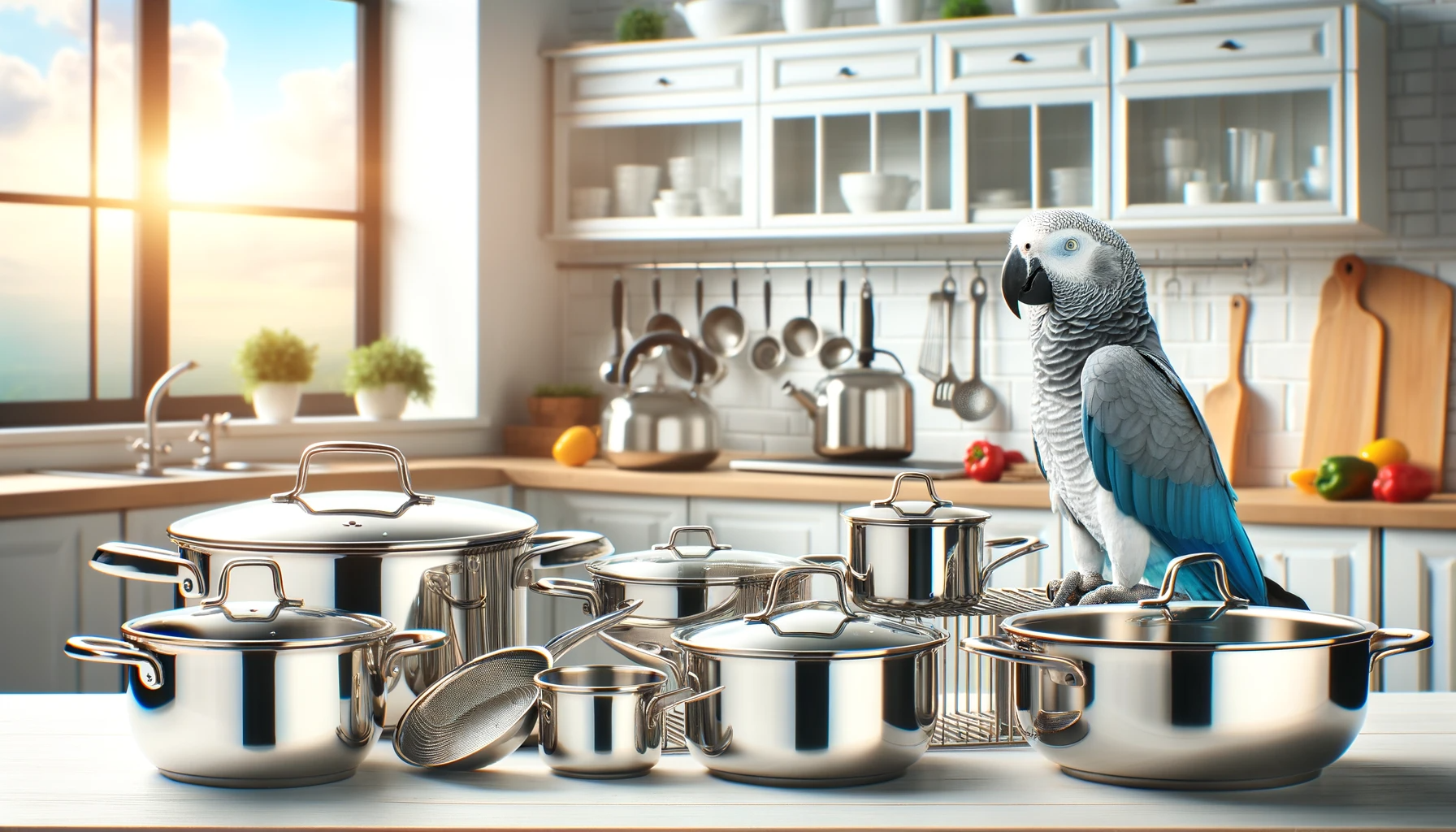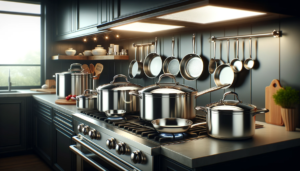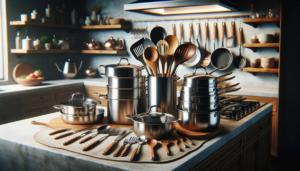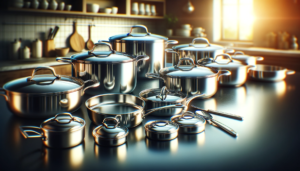Over 80% of bird owners use stainless steel pots and pans daily.
But can scratches and wear allow risky metals like nickel to leach into pet bird diets?
Stainless steel cookware is generally safe for use around birds, but potential metal leaching demands care when cooking bird foods.
Let’s dive into the safety considerations around stainless steel and birds more closely so you can make informed choices for your flock’s health.
Is Stainless Steel Cookware Safe for Birds?
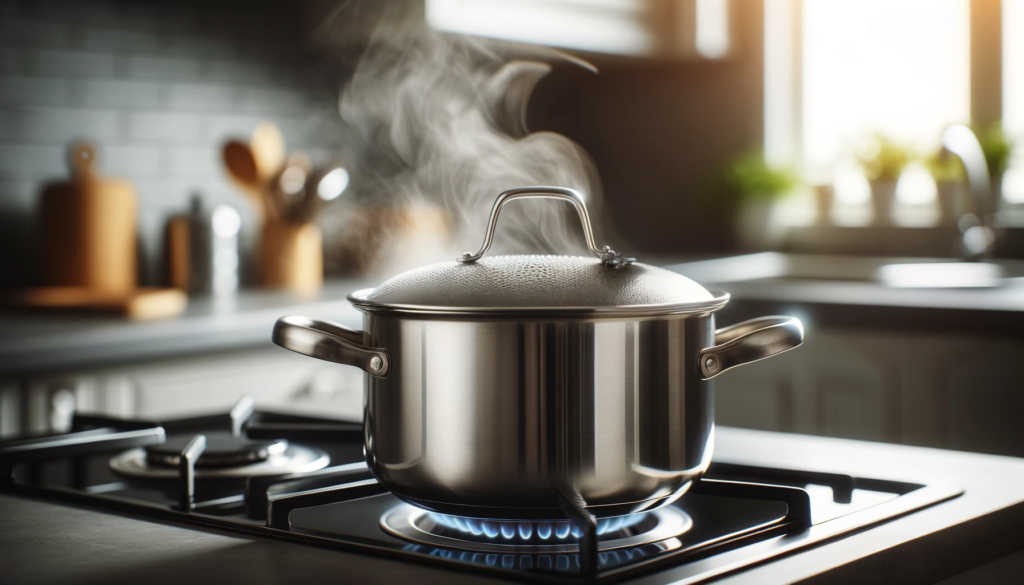
The short answer is yes, stainless steel cookware is generally considered safe for use around birds when certain reasonable precautions are taken.
On its own, stainless steel is typically non-toxic and inert enough not to pose major health issues for birds that access pots and pans made from it.
However, there are some potential concerns around harmful metal leaching over time, especially nickel, that require awareness and preventative steps when cooking for birds.
Below we dive deeper into the specifics of stainless steel safety for bird exposure, leaching risks factors, and tips pet owners can follow to use stainless responsibly for optimal bird health.
Is Stainless Steel Toxic to Birds?

Stainless steel, as a material, is generally considered non-toxic and safe for bird exposure when used to make solid cookware items.
The various metals used to create stainless steel alloys are not typically thought to pose risks of toxicity when birds simply touch or access pans made with stainless steel.
However, there have been some concerns raised in veterinary research about the potential for stainless steel cookware to leach trace metals over time when used for cooking, especially nickel.
Nickel is sometimes added to the mixtures of metals like chromium, iron, and carbon that make up many stainless steel alloys.
While stainless steel itself does not inherently contain nickel in all types, it is very frequently included to enhance the durability, corrosion resistance, and overall performance of stainless steel cookware.
If older or lower-quality stainless steel pans are allowed to deteriorate with extensive scratching, pitting, and erosion over years of use, higher amounts of the metals present in the alloys can begin to dissolve or leach out as ions into the foods cooked.
This means trace particles of metals like nickel can end up ingested by birds eating food prepared in damaged, inferior-grade stainless steel pans for long periods.
Consuming high doses of nickel has been linked in avian health research to several adverse effects in birds over time, including gastrointestinal irritation, neurological issues, liver and kidney damage, respiratory effects, immune suppression, behavior changes, reduced hatching rates, and decreased lifespans.
However, well-maintained high-quality stainless steel cookware that retains its protective coatings is far less likely to result in significant hazardous nickel exposure for birds through their diets.
Factors That Impact Nickel Leaching From Stainless Steel
There are a few pivotal factors involved that can influence the potential for nickel specifically to leach out of stainless steel pans into bird foods over years of use:
Cooking Acidic Ingredients: Foods with high acidity, such as tomatoes, citrus fruits and juices, vinegars, and more have been shown to interact with stainless steel alloys and cause higher amounts of metal corrosion and leaching to occur during the cooking process.
The lower pH of acidic ingredients can essentially dissolve small mineral particles out from cookware metals through a chemical reaction.
This effect tends to worsen with higher temperature exposure as well.
As a result of this risk, choosing not to cook highly acidic food items for birds in uncoated stainless steel cookware on a regular basis can potentially prevent hazardous dietary nickel exposures for pet birds before issues of toxicity arise.
Quality of Stainless Steel: Research has demonstrated that older, inferior-grade stainless steel cookware tends to allow significantly more leaching of nickel and other metals compared to high-quality stainless steel pans.
This has to do with the exact specifications of metal proportions that make up each stainless steel alloy, as well as the durability and longevity of protective layers on pan surfaces.
Over many years, lower-cost stainless steel is more prone to scratching, pitting, wearing down, and corrosion that remove stable chromium oxide layers intended to contain metals.
Newer commercial-grade stainless steel designed specifically for cooking applications, however, is far less likely to deteriorate or leach metals at concerning levels with normal careful use.
Condition of Nonstick Coatings: While stainless steel itself does not have an inert nonstick surface, the vast majority of stainless pans rely on additional enamel, ceramic, or PTFE-based coatings applied on top to prevent food sticking and add easy cleaning properties.
If these nonstick coatings become extensively scratched, chip away, or contain bare spots that expose the underlying stainless steel alloy, this also raises the risk of direct metal contact and leaching into foods.
Any breaches in protective external coatings can allow migration of metals like nickel into ingredients during cooking.
Heavily damaged nonstick pans should never be used for bird food preparation.
Tips to Limit Metal Exposure for Birds From Cookware
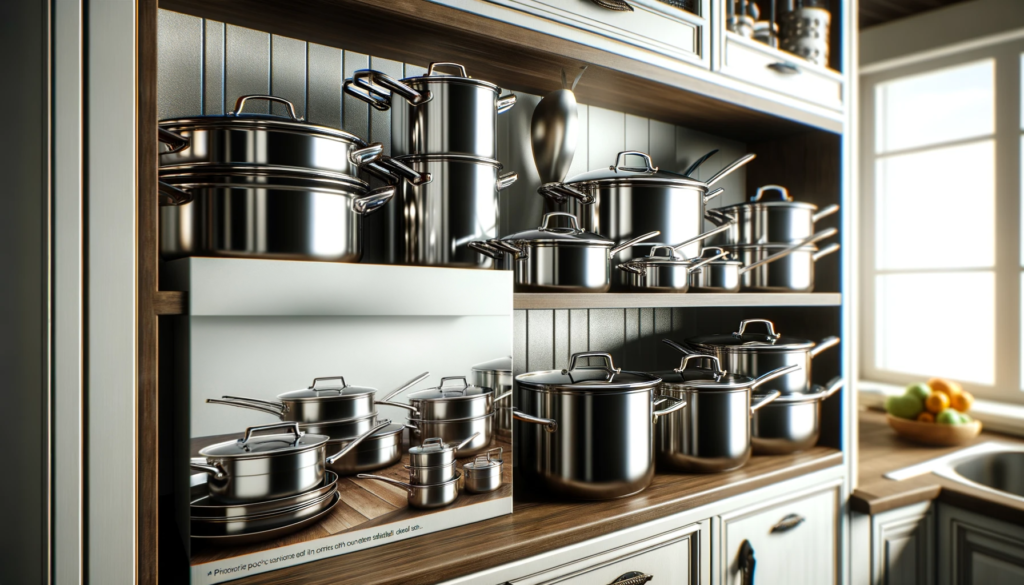
To minimize risks of overexposure to hazardous metals in birds’ diets from cookware, there are some best practices bird owners can implement:
Purchasing Only High-Grade Stainless Steel Designed for Culinary Use: When selecting new stainless steel pots or pans that may be used to cook bird foods, invest whenever possible in commercial-grade options clearly specified as safe for food contact and designed not to leach metals significantly under typical usage conditions.
Quality medical-grade stainless steel is also a good option.
Avoid very inexpensive cookware likely to be made with lower purity metals more prone to leaching nickel or other particles into foods over time.
Using Alternative Cookware Materials for Any Acidic Bird Ingredients: Do not use uncoated stainless steel pans alone to cook acidic food items like tomatoes, citrus fruits/juices, vinegars, wine, or tart preservatives that pet birds will later consume.
The increased acidity interacts with stainless steel to worsen leaching potential.
Instead, choose inert glass, ceramic, cast iron, or fully-intact nonstick pans when cooking any acidic recipes for birds to provide a protective barrier between stainless metal alloys and ingredients.
Frequently Inspecting Nonstick Coatings and Replacing Any Damaged Pans: For any cookware with nonstick enamel, ceramic, or PTFE-based coatings that birds may access for food prep, examine surfaces carefully and regularly for scratches, chips, cracks, bare spots of metal, and other deterioration that could potentially allow stainless steel contact and leaching.
Immediately stop using and replace any pans with clear breaches in protective external nonstick layers.
Paying Attention to Any Concerning Symptoms in Birds That Ingest Foods: While quality cookware is unlikely to pose excess metal exposure risks, remain vigilant about monitoring birds for any signs of potential heavy metal toxicity if they happen to access scratched pans.
Symptoms can include digestive issues, unusual behaviors, foot or limb paralysis, respiratory distress, seizures, and more.
Seek veterinary help immediately if any poisoning is suspected related to cookware access.
Providing Bird-Safe Non-Toxic Cookware Alternatives
In addition to simple precautions when using stainless steel around birds, providing deliberately bird-safe non-toxic alternatives for preparing their foods can offer more peace of mind:
Pans with Intact Nonstick Barriers Like PTFE, Ceramic, and Enamel: Cooking with intact, non-degraded nonstick materials can provide a valuable barrier protecting against stainless steel underneath having contact with food during cooking.
Just take care choosing nonsticks designed not to leach dangerous chemicals at high temperatures (avoid straight Teflon).
Glass, Ceramic, and Cast Iron Cookware Options: Totally inert materials like borosilicate glass, ceramic without lead glazes, and properly seasoned cast iron pose no risks of metal leaching at all into recipes.
These durable options are ideal for bird food prep when free of coatings or paints that could chip.
Avoiding Known Toxic Materials Like Lead and Teflon: Ensure any cookware used around birds never contains coatings or paints with lead, or reach temperatures that could vaporize Teflon and release fumes.
These scenarios can cause immediate poisoning unrelated to stainless steel safety.
Using alternates like glass pans, focusing on quality cookware suited for birds, and taking sensible precautions allows stainless steel to be used responsibly in kitchens with pet birds present to minimize health risks related to excess nickel or metal exposure through foods.
Conclusion
In conclusion, stainless steel cookware can be used safely for birds when certain precautions are taken.
Choosing high-quality pans designed not to leach metals significantly, avoiding cooking acidic foods for birds in stainless pans, preventing scratches that expose metal, and providing bird-safe nonstick alternatives can allow bird owners to implement responsible practices that limit excess nickel or metal exposure risks.
While stainless steel itself tends to be non-toxic, being informed about potential leaching issues allows bird health to be prioritized when preparing their food.
